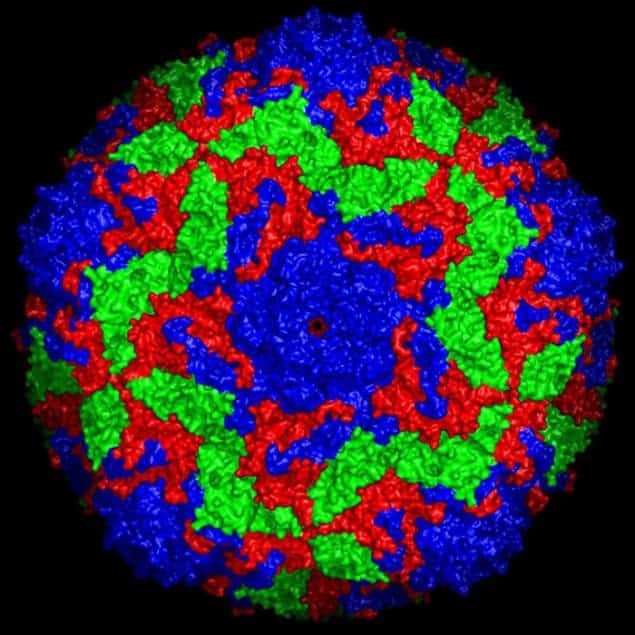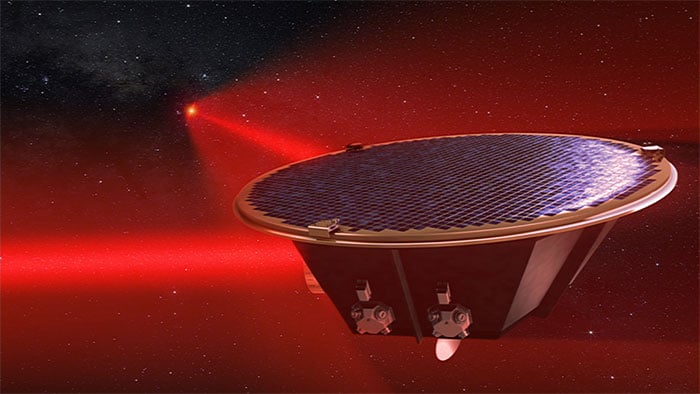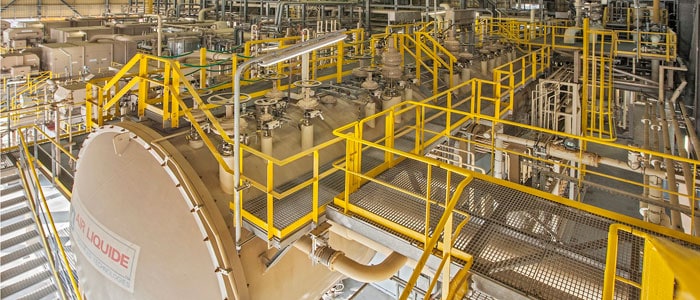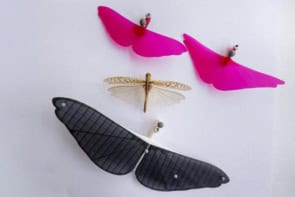Flash Physics is our daily pick of the latest need-to-know developments from the global physics community selected by Physics World‘s team of editors and reporters

Virus atomic structure revealed with X-ray lasers
The atomic structure of a full, intact virus particle has been successfully deciphered using X-ray crystallography for the first time. A virus particle, or virion, contains a protein structure called a capsid that holds and shields the viral genetic material. Made of several sub-units, this structure also helps the virion attach to and penetrate a host cell. Therefore, understanding these protein structures can help biologist design defences against viruses. To do this, scientists turn to X-ray crystallography. When high-energy X-rays are fired at a crystal, the atoms diffract the X-rays, creating a diffraction pattern that is characteristic of the crystal’s atomic structure. While proteins are tiny crystals, they are not stable and sturdy like, for example, salt crystals. Instead, they are easily damaged by X-rays. The technique also needs large amounts of sample proteins. To combat these limitations, a team led by Alke Meents at DESY in Germany has developed a micro-patterned chip that contains thousands of pores for holding small amounts of protein crystals. By scanning a pulsed X-ray laser over the chip, a diffraction image can be recorded for each pulse. The team analyses a full virus crystal and a single virus protein using the LCLS X-ray laser at the SLAC National Accelerator Laboratory in the US. For the full virus, they achieved a 9% hit rate – when the X-ray successfully hits a crystal – and collected enough data within 14 min at room temperature to determine the structure of the virus down to 0.23 nm. In the second test, the team froze the isolated protein, which improved the hit rate to 90% and data collection only took 10 minutes. Freezing, however, is too brutal for some virus crystals because they are too delicate. “Our approach not only reduces the data collection time and the quantity of the sample needed, it also opens up the opportunity of analysing entire viruses using X-ray lasers,” Meents says. The results are presented in Nature Methods.
Qatar blockade could affect helium supplies
Concern is growing within the helium industry that the current economic blockade of Qatar could have a negative effect on global helium supplies. Located on the Persian Gulf, Qatar accounts for about 25% of the global production of helium – an element that plays a crucial role in low-temperature physics experiments and is also used for cooling the superconducting magnets used in magnetic resonance imaging (MRI) medical scanners. For the past few weeks, Qatar has been blockaded by several of its Arab neighbours and reports from the country suggest that liquid helium is not being shipped out and empty containers are not being returned from abroad. “Qatar ships liquid helium around the world,” says low-temperature physicist William Halperin of Northwestern University in the US. “It seems like an obvious conclusion that a blockade will affect helium availability on a global scale.” Two facilities in Qatar that extract helium from natural gas are reported to have shut down. The US firm Air Products is involved in the construction of a new helium facility in Qatar and says that the project could be delayed because of the blockade.
LISA gravitational-wave mission selected for ESA’s Comic Vision

The LISA gravitational-wave mission has been selected by the European Space Agency (ESA) as its third and final large-class mission. The other two missions have already been selected and are the Jupiter Icy moons Explorer (JUICE) and the Advanced Telescope for High-Energy Astrophysics (Athena). LISA – the Laser Interferometer Space Antenna – will be a gravitational-wave observatory comprising three satellites in Earth-like orbits of the Sun. In 2013 the ESA identified the “gravitational-wave universe” as the theme for its third large-class mission, which is part of the agency’s Cosmic Vision long-term plan for space science. Since then, the ground-based Laser Interferometer Gravitational-Wave Observatory (LIGO) has detected three gravitational waves caused by black-hole mergers and the LISA Pathfinder space mission has demonstrated key technologies that are required for LISA. Earlier this year, for example, scientists working on LISA Pathfinder showed that test masses on the spacecraft can be successfully isolated from electrostatic forces. The three LISA satellites will each have a test mass – and lasers will make precise measurements of slight displacements of these masses caused by gravitational waves. The mission was chosen during a meeting of ESA’s Science Programme Committee, where they also approved the exoplanet hunter Plato to move into development. Now LISA’s design and costing can be completed so that the mission can launch in 2034.




